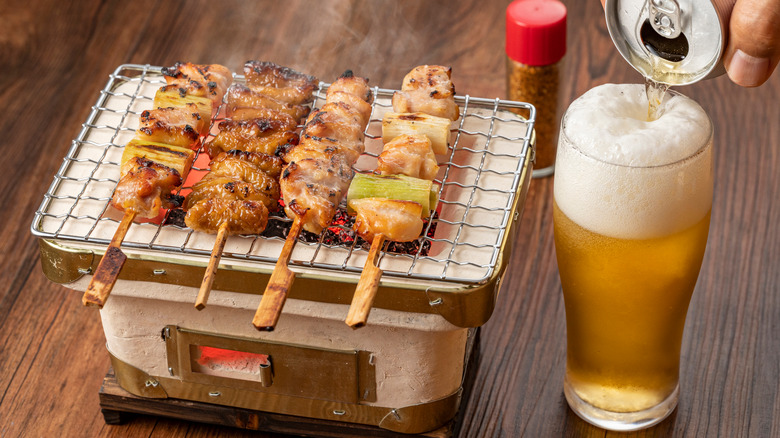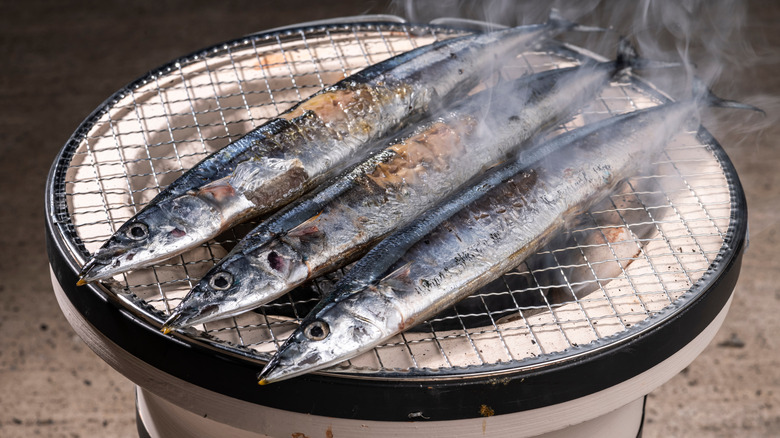Shichirin: The Traditional Japanese Grill That Dates Back To The Edo Period
American outdoor grilling is a beloved pastime that has popularized the use of large grills with a wide surface area for feeding the masses at parties and potlucks. In Japan, smaller charcoal grills known as shichirin are favored, instead, for their lightweight portability and more focused cooking space. Shichirin grills have been traditionally used in Japan for centuries to grill seasoned meats, fish, veggies, and iconic Japanese foods like yakitori. Its use has been traced back to Japan's Edo period (1603-1868). Before the shichirin's grilling potential was utilized by the general public, it was only used by the upper class and military warriors. Its portability made it the perfect tool for hungry samurai, who would use it to cook up thinly sliced meat between battles.
Shichirin translates to "seven wheels," which is thought to refer to the seven holes located at its base where the fuel burns. In Japan, that fuel will often be binchotan — a smokeless charcoal renowned for its high purity levels and lack of chemical additives. This can be a pricey option since binchotan is hand-made using oak sourced from the Kishu forests, so lump charcoal and briquettes are also sometimes used today. The price of the fuel forms the latter half of the name of the grill. "Rin," indicates the currency needed to buy the shichirin's fuel during the Edo period. While the Japanese still call these grills shichirin, people in the U.S. recognize them by another, more familiar term.
Shichirin grills come in many forms
These days, Japanese-style grills come in many shapes and sizes, especially in the U.S. Many Western barbecue lovers mistakenly refer to them as hibachi grills, despite the fact that hibachi is a fundamentally different appliance in Japan, which is traditionally only used as a heating source. Americanized "hibachi" grills were popularized in the States after being imported from Japan, Hawaii, and Taiwan in the '60s. True Japanese shichirin are typically shaped like small cylinders. However, there are many modernized variations of this tabletop grill, including gas-powered versions called Konro, which are shaped like squares or narrow rectangles to allow room for more food.
Shichirin are generally made of glazed ceramic, but the best versions will feature a base made from a mixture of fossilized algae known as diatomite. This type of grill is more expensive, and for good reason. A grill made of diatomaceous earth will have superior cooking abilities since this material is prized for its ability to lock in heat and distribute it evenly. Shichirin available today will most often have a practical look to them, but you can still find some unique, hand-made ceramic shichirin that feature vintage designs.
Today the options for cooking on a shichirin grill are limitless. Besides tasty meat-and-veggie skewers like yakitori, grilled fish such as Pacific saury is a popular shichirin-made delicacy in Japan. Whether it feeds small or larger gatherings, this is one traditional grilling method worth adding to your culinary bucket list.

